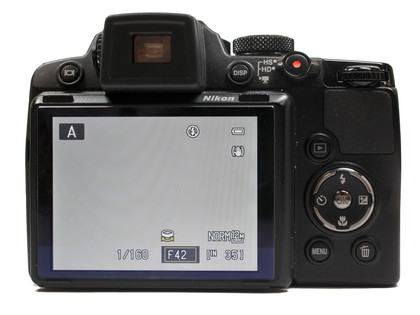Why you can trust TechRadar

The P500's black, SLR-shaped body is constructed from high quality plastic that feels quite robust.
A deep finger grip is provided and is coated with a soft rubber material to make using the camera with one hand a pleasant experience.
The controls are laid out in a way that will suit both one-handed shooters and those who prefer to support the weight of the camera with their other hand. A second zoom control is provided on the side of the lens barrel, and can be operated with a left hand thumb.
This zoom control provides a little more precision when it comes to the speed of the zoom than the bezel control - which is located around the shutter release - making it ideal for use when recording video.

On the rear, there's an articulated three-inch screen with a resolution of 921,000 dots. The view on the screen is very clear and sharp, with good contrast - even in bright lighting conditions - thanks in part to the excellent anti-reflective coatings. The screen can be tilted to allow shooting above head height, or for use as a waist-finder, making shots from high and low angles easier to take.
An electronic viewfinder with a resolution of 230,000 dots is also provided and this is especially useful when using the lens in the telephoto range as it's easier to keep the camera steady when it is held to the eye.
The P500's menus are clear and easy to navigate via the large directional control on the rear. This control also provides quick access to exposure compensation, macro, self-timer and flash modes.
Sign up for breaking news, reviews, opinion, top tech deals, and more.
A small thumb-wheel is located near the top of the rear, making changes of exposure setting quick and straightforward, and will suit users of Nikon DSLRS, who may be used to this control method.
A built-in pop-up flash raises about an inch clear of the lens, which should help to reduce red-eye in photos taken at reasonably close distances. The flash doesn't pop up automatically and the camera will display an on-screen warning if the flash is engaged but not required.
A burst of five shots can be taken continuously at a rate of eight frames per second. Although this feature is impressive on paper, in practice the camera shoots this burst in under a second, which may result in missing action if the burst isn't accurately timed.
